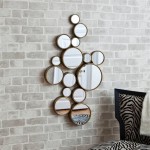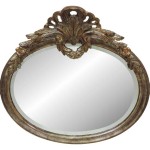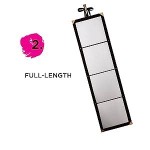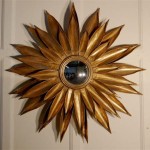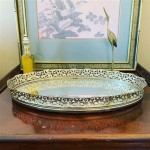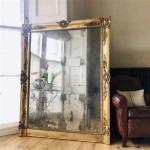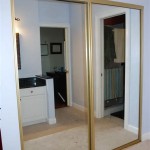How to Install Mirrors on a Ceiling: A Comprehensive Guide
Installing mirrors on a ceiling can dramatically transform a space, creating the illusion of height and adding a touch of elegance. However, this project requires careful planning and execution to ensure both safety and aesthetic appeal. This guide provides a step-by-step approach to installing ceiling mirrors, outlining essential considerations and procedures.
Planning and Preparation
Before commencing the installation, thorough planning is crucial. This involves assessing the ceiling structure, selecting appropriate mirror types, and gathering necessary tools and materials. Careful preparation minimizes potential issues and ensures a smooth installation process.
Key considerations include:
- Ceiling Type: Determine whether the ceiling is drywall, plaster, or another material. This will inform the choice of fasteners and installation method.
- Mirror Size and Weight: Larger, heavier mirrors require more robust support systems and specialized installation techniques.
- Placement: Consider the desired aesthetic effect and the room's layout when deciding on mirror placement. Avoid placing mirrors in areas prone to excessive moisture or temperature fluctuations.
- Safety Precautions: Working overhead involves inherent risks. Ensure proper safety measures are in place, including eye protection, gloves, and stable scaffolding or ladders.
Choosing the Right Mirrors and Adhesive
Selecting the appropriate mirror type and adhesive is paramount for a successful installation. The mirror's weight and the ceiling material dictate the adhesive's strength and application method.
Mirror Selection Considerations:
- Acrylic Mirrors: Lightweight and shatter-resistant, acrylic mirrors are a safer alternative to glass, particularly for larger installations.
- Glass Mirrors: Traditional glass mirrors offer superior reflectivity but require more robust support and careful handling due to their weight and fragility.
- Mirrored Tiles: Smaller, individual tiles offer flexibility in design and can be easier to install, especially on uneven ceilings.
Adhesive Selection Considerations:
- Construction Adhesive: Suitable for heavier mirrors, construction adhesive provides a strong bond but requires adequate curing time.
- Mirror Mastic: Specifically formulated for mirrors, mastic offers excellent adhesion and prevents silvering damage.
- Double-Sided Tape: For lighter acrylic mirrors or tiles, heavy-duty double-sided tape can offer a quick and relatively simple installation method.
Installation Process for Mirror Tiles
Installing mirror tiles offers a manageable approach, especially for DIY projects. The smaller size reduces the risk of breakage and simplifies handling.
Installation Steps:
- Surface Preparation: Clean the ceiling surface thoroughly to remove dust, debris, and any loose paint. A smooth, clean surface ensures optimal adhesion.
- Layout Planning: Mark the desired layout on the ceiling using a pencil and level to ensure accurate placement and alignment of the tiles.
- Adhesive Application: Apply adhesive to the back of each tile as per the manufacturer's instructions. Ensure adequate coverage for a secure bond.
- Tile Placement: Carefully press each tile onto the ceiling, aligning it with the marked layout. Use spacers to maintain consistent gaps between tiles.
- Curing Time: Allow the adhesive to cure completely according to the manufacturer’s recommendations before disturbing the tiles.
Installation Process for Large Mirrors
Installing large mirrors requires extra care due to their weight and fragility. Assistance is highly recommended to ensure safe handling and proper placement.
Installation Steps:
- Support System: Install a support system, such as J-channels or mirror clips, to secure the mirror to the ceiling and distribute its weight evenly.
- Adhesive Application: Apply construction adhesive or mirror mastic to the designated areas on the back of the mirror, following the manufacturer's instructions.
- Mirror Placement: Carefully lift the mirror into position and secure it to the support system. Ensure proper alignment and press firmly against the ceiling to create a strong bond.
- Securing and Finishing: Use screws or other appropriate fasteners to further secure the mirror to the support system. Conceal the fasteners with decorative caps or trim.
- Curing Time: Allow the adhesive to cure fully before removing any temporary supports.
Safety Considerations
Safety should be the top priority throughout the entire installation process. Working with mirrors and at elevated heights requires careful attention to prevent accidents.
Key Safety Precautions:
- Eye Protection: Wear safety glasses to protect eyes from dust, debris, and potential glass shards.
- Gloves: Use gloves to protect hands from adhesive and sharp edges.
- Stable Work Platform: Utilize a secure and stable work platform, such as scaffolding or a sturdy ladder, to reach the ceiling safely.
- Assistance: Enlist the help of another person when handling large or heavy mirrors.
- Proper Ventilation: Ensure adequate ventilation when working with adhesives and sealants.

Ceiling Mirrors For Bedrooms Pictures Options Tips Ideas

How To Hang A Mirror On The Ceiling Transform Your Space With An Elevated Reflection Bark And Chase

How To Hang A Mirror On The Ceiling Transform Your Space With An Elevated Reflection Bark And Chase

How To Hang A Mirror On The Ceiling Transform Your Space With An Elevated Reflection Bark And Chase

How To Make A Ceiling Mirror With Planner 5d

How To Hang A Mirror On The Ceiling Transform Your Space With An Elevated Reflection Bark And Chase

How To Install A Ceiling Hung Mirror

How To Hang A Mirror On The Ceiling Transform Your Space With An Elevated Reflection Bark And Chase

Mirrored Ceiling In Interior The Best 20 Design Ideas

How To Hang A Mirror On The Ceiling Transform Your Space With An Elevated Reflection Bark And Chase


